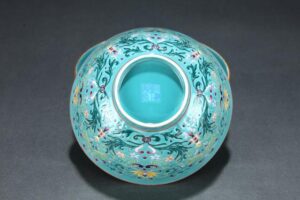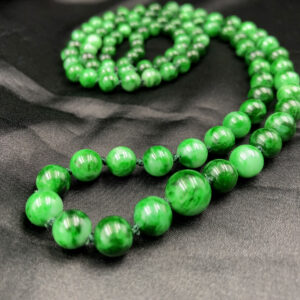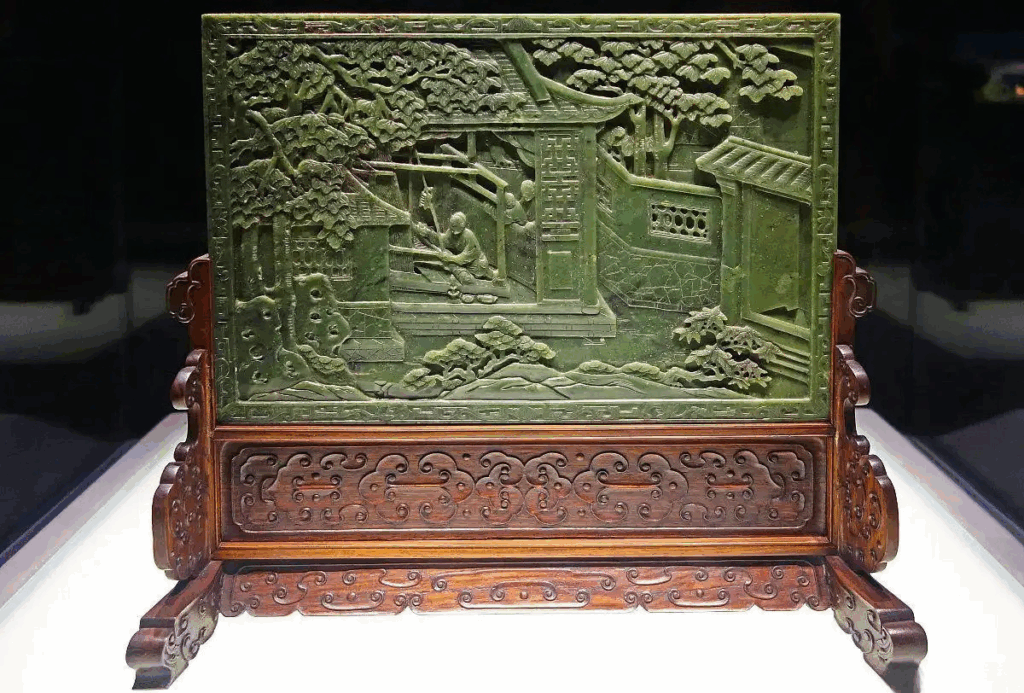
The Scholar’s Canvas: A Journey Through Classical Chinese Table Screens
From Functional Divider to Philosophical Object
Born as practical space dividers in Tang dynasty studios, table screens (插屏) evolved into 3D poetry where wood, stone, and pigment converged. By the Ming era, they surpassed brushes as the most revered scholar’s companion—not for utility, but for embodying the Confucian ideal of “viewing nature while indoors.” At VirtuCasa, we preserve these portable landscapes through 3D digital conservation and NFT-backed provenance.
從功能性隔屏到哲學物件
插屏誕生於唐代書房作為實用隔斷,逐漸演變為立體詩篇——木材、石材與顏料在此交匯。至明代,其地位超越毛筆成為文人首伴,並非因實用性,而是體現了「臥遊山水」的儒家理想。VirtuCasa透過3D數字存檔與NFT溯源保存這些微縮山水。
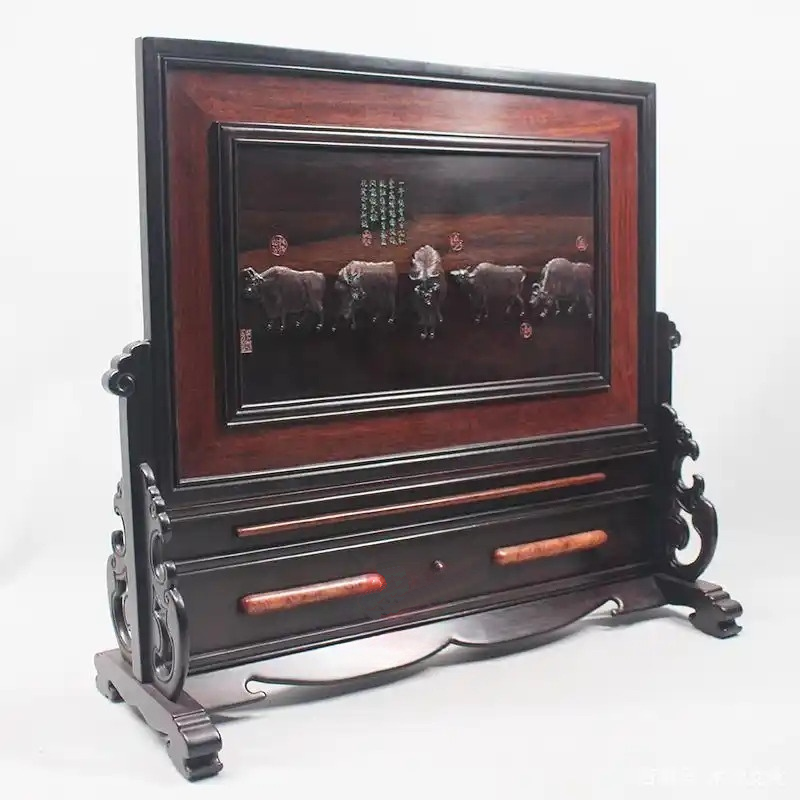
1. Zitan ‘Five Oxen’ Screen: Imperial Craft Revived
Dimensions: L40.5cm × W16cm × H38.5cm
Material: Burmese rosewood (大叶紫檀)
Historical Context: Replicates Han Huang’s Tang dynasty masterpiece (c. 750 CE), one of only 10 surviving silk paintings from the era. The original is guarded in Beijing’s Palace Museum.
Craft Technique: Thread-pulling carving (推丝工艺) recreates brushstrokes in wood – each ox’s fur direction matches the ink original.
Cultural Code: Oxen represent steadfastness (坚毅) in Confucian ideology. Displaying this screen signaled a scholar’s resilience.
1. 大葉紫檀五牛圖插屏:皇家工藝復興
尺寸:長40.5cm × 寬16cm × 高38.5cm
材質:緬甸玫瑰木(大叶紫檀)
歷史背景:復刻韓滉唐代名畫(約公元750年),現存十幅唐代絹畫之一,真跡藏於北京故宮博物院。
工藝:推絲工藝以木仿筆觸——每頭牛毛髮方向與原作墨跡一致。
文化密碼:牛在儒家思想中象徵堅毅,展示此屏宣告學者的韌性。
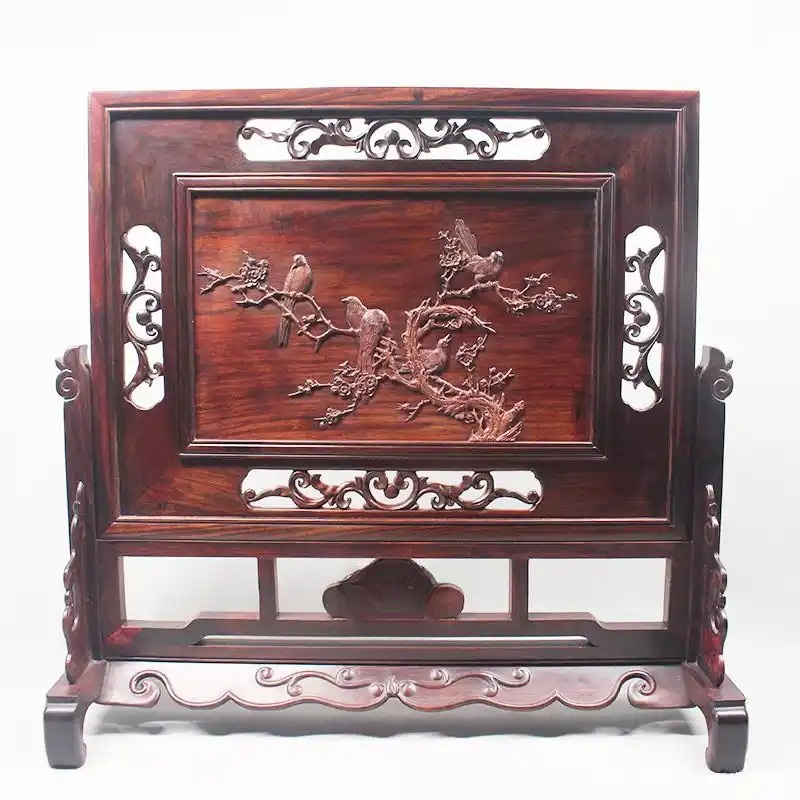
2. Cocobolo ‘Magpie on Plum’ Screen: Joy Carved in Wood
Dimensions: L44cm × W15cm × H42.5cm
Material: Mexican cocobolo (微凹黄檀)
Symbolism: Magpies represent “sacred messengers” (圣贤) in Daoist lore. Plum blossoms symbolize winter endurance.
Craft Technique: Relief carving (浮雕) achieves 3D depth where wings appear detached from the background.
Scholar’s Usage: Placed on wedding gift tables to bless marriages with harmony.
2. 微凹黃檀喜上枝頭插屏:木中刻歡喜
尺寸:長44cm × 寬15cm × 高42.5cm
材質:墨西哥微凹黃檀
象徵:喜鵲在道教傳說中為「聖賢信使」,梅花象徵冬日的堅韌。
工藝:浮雕技法營造立體感,雀翼看似脫離背景。
文人用途:置於婚禮聘禮桌祝福婚姻和諧。
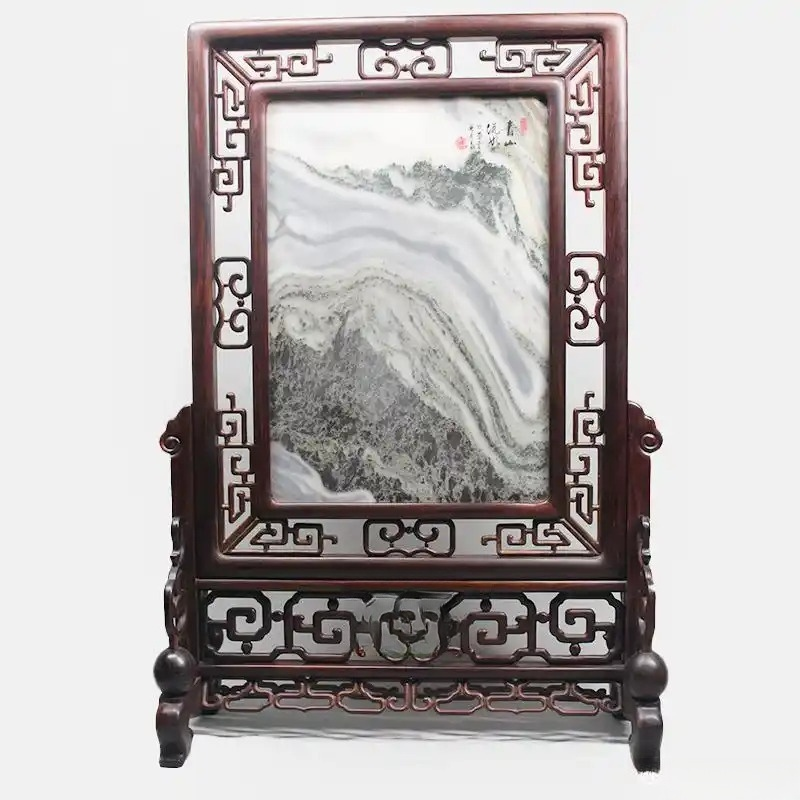
3. Rosewood ‘Cloud Stone’ Screen: Mountain Essence Captured
Dimensions: L43cm × W16cm × H65.5cm
Material: Vietnamese rosewood (红酸枝) + Dali marble (云石)
Geological Wonder: The marble’s patterns formed over 2,500 years through carbonate crystallization.
Philosophical Alignment: Represents “scholar’s travel without moving” (臥遊) – contemplating landscapes indoors.
Craft Precision: Frame joints use dovetail-in-dovetail (套榫) construction without glue.
3. 紅酸枝雲石插屏:捕獲山魂
尺寸:長43cm × 寬16cm × 高65.5cm
材質:越南紅酸枝 + 大理雲石
地質奇觀:雲石紋理經2500年碳酸鹽結晶形成。
哲學內涵:體現「臥遊」理念——於室內觀想山水。
工藝精度:框架採用無膠水的「套榫」結構。
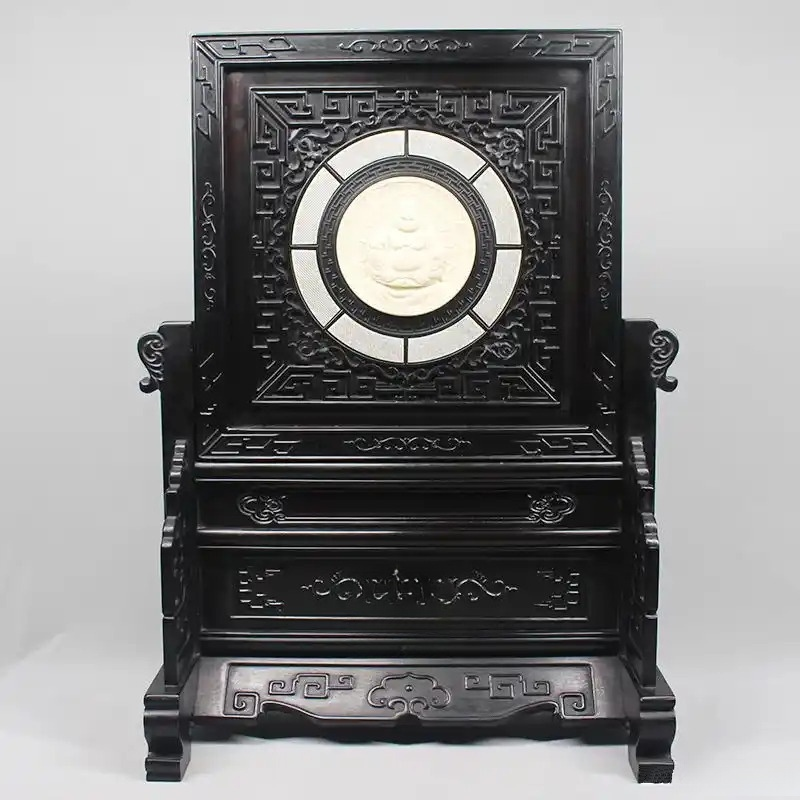
4. Ebony ‘Buddha’ Screen: Contemplation in Contrast
Dimensions: L33cm × W18.5cm × H43cm
Material: African ebony (紫光檀) + bleached pearwood
Spiritual Function: Served as focal point for meditation in Ming dynasty studios.
Color Symbolism: Black = eternity (永恒), White = purity (纯净).
Technical Marvel: Inlay tolerance < 0.1mm – paper cannot slide between materials.
4. 紫光檀嵌佛插屏:黑白禪思
尺寸:長33cm × 寬18.5cm × 高43cm
材質:非洲紫光檀 + 漂白梨木
精神功能:明代書房中作為冥想聚焦點。
色彩象徵:黑=永恒,白=純淨。
技藝奇蹟:嵌合公差<0.1mm——紙張無法插入材料間。
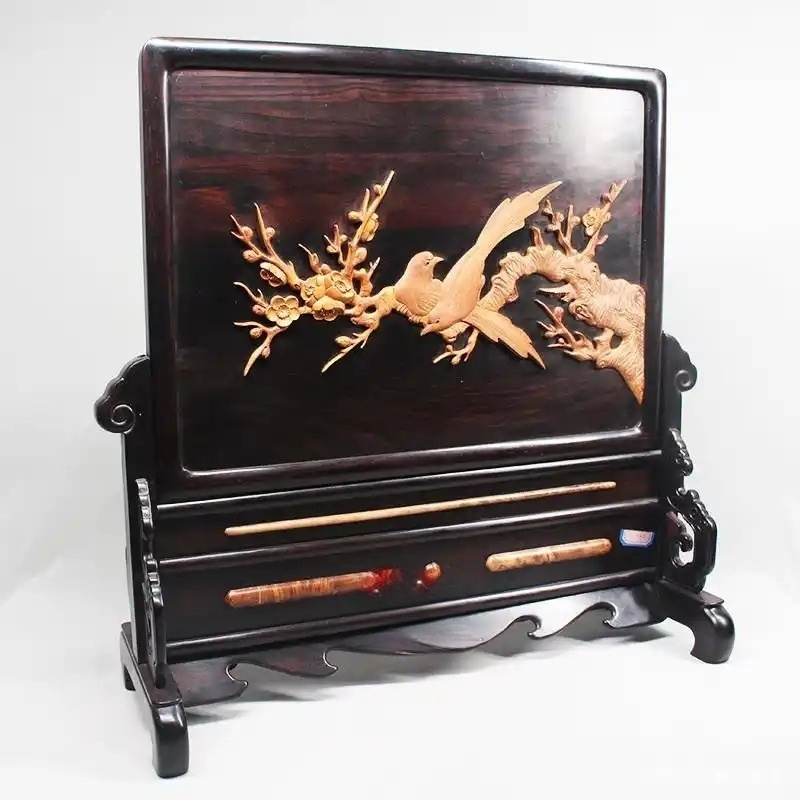
5. Zitan & Boxwood ‘Wealth’ Screen: Dual-Wood Allegory
Dimensions: L42.5cm × W15cm × H43cm
Material: Zitan (大叶紫檀) + boxwood (黄杨木)
Material Science: Boxwood’s 90-year growth cycle creates density that holds fine details.
Color Theory: “Black-gold contrast” (黑金對照) echoed imperial court aesthetics.
Artisan Secret: Boxwood is boiled in tung oil before carving to prevent cracking.
5. 大葉紫檀嵌黃楊富貴圖插屏:雙木寓言
尺寸:長42.5cm × 寬15cm × 高43cm
材質:紫檀 + 黃楊木
材料科學:黃楊木90年生長期造就承載精細雕刻的密度。
色彩理論:「黑金對照」呼應宮廷美學。
匠人秘技:雕刻前黃楊木需經桐油蒸煮防裂。
Why Scholars Valued Screens Over Paintings
As Ming literati Wen Zhenheng wrote(Chinese table screens): “A painting shows an artist’s hand. A screen reveals nature’s hand through the artist.” These were not decorations—they were portable landscapes for contemplation.
為何文人重屏勝畫
明文震亨《長物志》曰:「畫顯匠手,屏透天工透過匠手。」插屏並非裝飾——而是用於冥想的可攜山水。
Read More
- Jadeite Through the Seasons: A Guide to Year-Round Wear and Care
- Understanding Bronze Vessels: Types and Terminology
- Qing Dynasty Porcelain Techniques: Blue-and-White and Underglaze Red
- Metamorphosis: Chinese Sculpture Through the Dynasties
- Exploring Ding Kiln’s Diverse Charms: A Complete Guide to Appreciation

